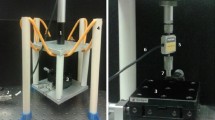Abstract
The apparent biodegradability and biocompatibility of the microbially produced polyester, poly(β-hydroxybutyrate) (PHB), has been the focus of much research by a number of authors with regard to its potential for use in packaging and medical implantation devices. PHB has recently been produced by gel-spinning into a novel form, with one possible application being as a wound scaffolding device, designed to support and protect a wound against further damage while promoting healing by encouraging cellular growth on and within the device from the wound surface. This new nonwoven form combines a large volume with a low mass, has an appearance similar to that of “cotton wool,” and has been called “wool” because of this similarity. The hydrolytic degradation of this wool was investigated in an accelerated model of pH 10.6 and temperature 70°C. It was determined that the PHB wool gradually collapsed during degradation. The surface area-to-volume ratio was concluded to be a primary influencing factor. Degradation was characterized by a reduction in the glass transition temperatures and melting points and a fusion enthalpy peak of maximum crystallinity, (88%), which coincided with the point of matrix collapse.
Similar content being viewed by others
References
G. Majno (1975)The Healing Hand: Man and Wound in the Ancient World, Harvard University Press, Cambridge, MA.
M. Yasin, S. J. Holland, and B. J. Tighe (1990)Biomaterials 11 451–454.
M. Yasin, S. J. Holland, A. M. Jolly, and B. J. Tighe (1989)Biomaterials 10 400–412.
S. J. Holland, M. Yasin, and B. J. Tighe (1990)Biomaterials 11 206–215.
T. Saito, K. Tomita, K. Juni, and K. Ooba (1991)Biomaterials 12 309–312.
W. Korsatko, B. Wabneggs, H. M. Tillian, G. Egger, R. Pfranger, and V. Walser (1984)Pharm. Ind. 46 952–954.
J. E. Kennedy, L. J. Notaranni, and C. W. Pouton (1987) British Pharmacological Conference, Science Sessions.
C. Doyle, E. T. Tanner, and W. Bonfield (1991)Biomaterials 12 841–847.
C. W. Pouton, J. E. Kennedy, L. J. Notaranni, and P. J. Gould (1988)Proc. Int. Symp. Control. Rel. Bioact. Mater. 15 179–180.
E. Kulz (1884)Z. Biol. 20 164.
P. K. Bondy, W. L. Blom, V. S. Whitner, and B. W. Farron (1949)J. Clin. Invest. 1126.
H. Brandl and P. Püchner (1990) in E. A. Dawes (Ed.),Novel Biodegradable Microbial Polyesters, Kluwer Academic, Dordrecht, The Netherlands, pp. 421–422.
J. Chen (1989) personal communication, Convatec WHRI.
S. Davies (1991) Ph.D. thesis, Aston University, Aston, UK.
Y. Tabata and Y. Ikada (1988)J. Biomed. Mat. Res. 220 837–858.
L. J. R. Foster and B. J. Tighe (1994)Biomaterials (in press).
R. J. Fredericks, A. J. Melveger, and J. Dolegievity (1984)J. Polym. Sci. Poly. Phys. Educ. 22 57–66.
L. J. R. Foster (1992) Ph.D. thesis, Aston University, Aston, UK.
Author information
Authors and Affiliations
Rights and permissions
About this article
Cite this article
Foster, L.J.R., Tighe, B.J. The degradation of gel-spun poly(β-hydroxybutyrate) “wool”. J Environ Polym Degr 2, 185–194 (1994). https://doi.org/10.1007/BF02067444
Issue Date:
DOI: https://doi.org/10.1007/BF02067444




